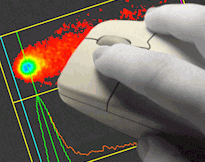DNA damage reduced by pea proteins
- Details
- Created: Thursday, 06 September 2012 10:02
 Pigeon peas are a famous and multi-use grain legume crop. They are commonly found and consumed in semi-tropical and tropical developing countries. The pigeon pea is the first seed legume plant to have its complete genome sequenced. They are an indigenous vegetable in northern Thailand. Researchers believe that pigeon peas are an ideal source of protein and vitamin B in the human diet, especially in the vegetarian population. Pigeon peas have many uses within traditional folk medicine; they have been used for many years in treating diabetes, expelling bladder stones, stabilising the menstrual period, soothing sores and skin irritations, treating hepatitis, measles, jaundice, dysentery and many other illnesses!
Pigeon peas are a famous and multi-use grain legume crop. They are commonly found and consumed in semi-tropical and tropical developing countries. The pigeon pea is the first seed legume plant to have its complete genome sequenced. They are an indigenous vegetable in northern Thailand. Researchers believe that pigeon peas are an ideal source of protein and vitamin B in the human diet, especially in the vegetarian population. Pigeon peas have many uses within traditional folk medicine; they have been used for many years in treating diabetes, expelling bladder stones, stabilising the menstrual period, soothing sores and skin irritations, treating hepatitis, measles, jaundice, dysentery and many other illnesses!
Recently, researchers in Thailand reported on the anti-oxidant potential of biological proteins from pigeon pea seeds. Crude pigeon pea proteins (PPP) were obtained using an extraction procedure.
The PPP extracts were investigated for anti-oxidant activity. The protective effect of PPP on membrane damage was investigated by conducting mitochondrial dehydrogenase and lactate dehydrogenase activity assays. Then, the anti-oxidative DNA damage of PPP was assessed using the comet assay.  The comet assay was performed after TK6 cells had been incubated with PPP for 24 hours. Then, the TK6 cells were exposed to H2O2 for DNA strand breaks to take place by ROS (reactive oxygen species) generation. The H2O2 treatment was performed at 4°C for 5 minutes to avoid any DNA repair processes. The comet assay slides were made and then stained with ethidium bromide. Cells were analysed using a fluorescence microscope and the images of one hundred randomly selected cells per experimental point were scored and analysed for damage using the Comet Assay image analysis system, supplied by Perceptive Instruments. The tail length and tail moment were used for data analysis.
The comet assay was performed after TK6 cells had been incubated with PPP for 24 hours. Then, the TK6 cells were exposed to H2O2 for DNA strand breaks to take place by ROS (reactive oxygen species) generation. The H2O2 treatment was performed at 4°C for 5 minutes to avoid any DNA repair processes. The comet assay slides were made and then stained with ethidium bromide. Cells were analysed using a fluorescence microscope and the images of one hundred randomly selected cells per experimental point were scored and analysed for damage using the Comet Assay image analysis system, supplied by Perceptive Instruments. The tail length and tail moment were used for data analysis.
The results from comet assay demonstrated the anti-oxidative effect of PPP on DNA damage in H2O2-induced TK6 cells. This activity was indicated by a significant reduction in the tail length parameter. The researchers believe that further studies at the peptide level may be required in order to identify the active molecules responsible for pharmacological activity as well as the mechanisms of their anti-oxidative property.
 This case study is based upon:
This case study is based upon:
Crude proteins from pigeon pea (Cajanus cajan (L.) Millsp) possess potent SOD-like activity and genoprotective effect against H2O2 in TK6 cells
Journal of Medicinal Plants Research Vol. 5(32), pp. 6977-6986, 30 December, 2011
Thanchanok Muangman, Wichet Leelamanit and Prapaipat Klungsupaya
